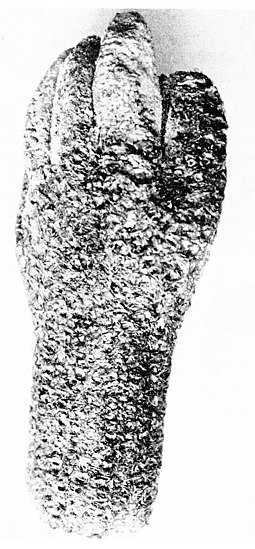branched, thus giving rise to the "lingers," while the lower portion of the cob makes a fair-shaped "wrist." The engraving is made from a photograph recently sent from Missouri.
It would be impossible to mention the instances even of abnormal forms in seeds, or to go further and show how there may Fig. 11.—Hand-cob.be monstrous forms that can only be seen through the compound microscope.
Fig. 11.—Hand-cob.be monstrous forms that can only be seen through the compound microscope.
The molds, mildews, rusts, smuts, and various blights that feed upon higher plants have their freaks that are sometimes puzzling to those who study these minute structures.
A large museum might be filled with the eccentricities of the vegetable world. Some of them would only teach the lesson of a lack of equilibrium among the laws which determine definite lines of growth. Others would serve to open the door to some hidden fact of vegetable morphology. Thus, the interchange of stamens and pistils in some abnormal blossom teaches the lesson of the common origin of the two essential organs, while the gradation of either or both to floral envelopes indicates that pistils are only petals of a special form for a special purpose. In short, the malformations as we speak of them are only forms in less than their usual disguise. The leaf is the unit of structure in the flower, and the flower is a metamorphosed branch, which may terminate in a seed-vessel, as the pear, or in rare instances in a leafy branch beyond the fruit, thereby corroborating the belief that the fruit is a part of a stem.
Some one has said that when under the influence of an intoxicant the victim throws off his disguise and lets his inner self
